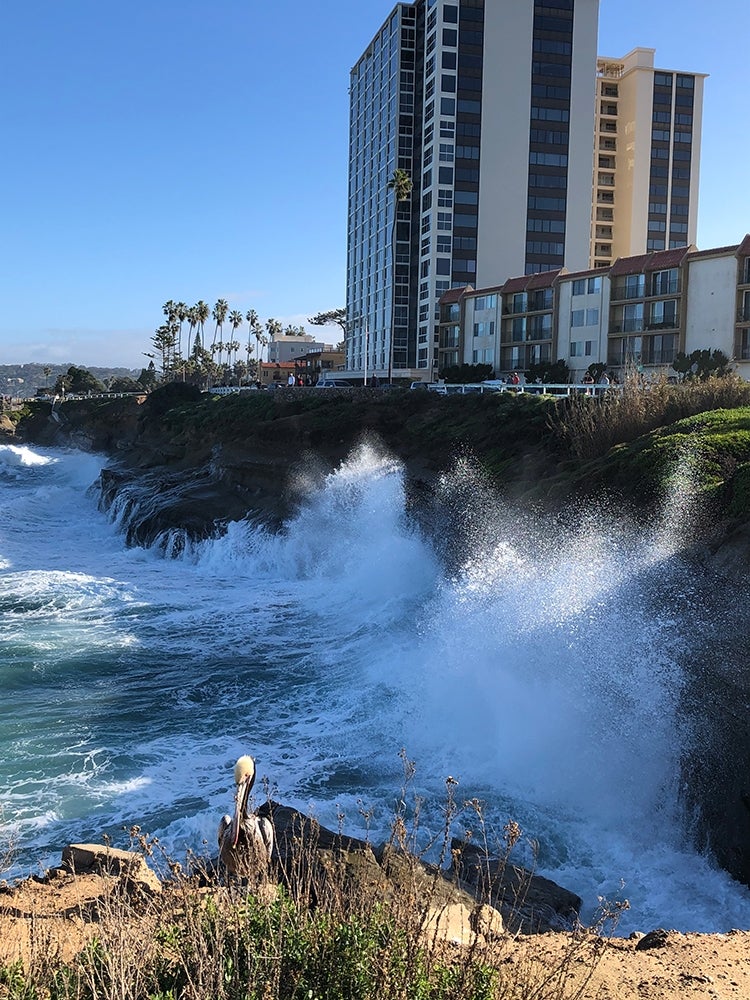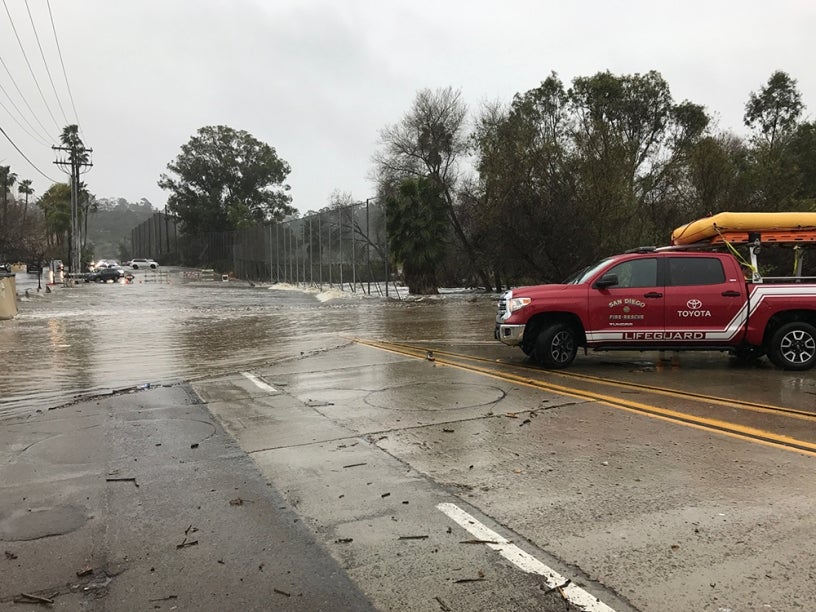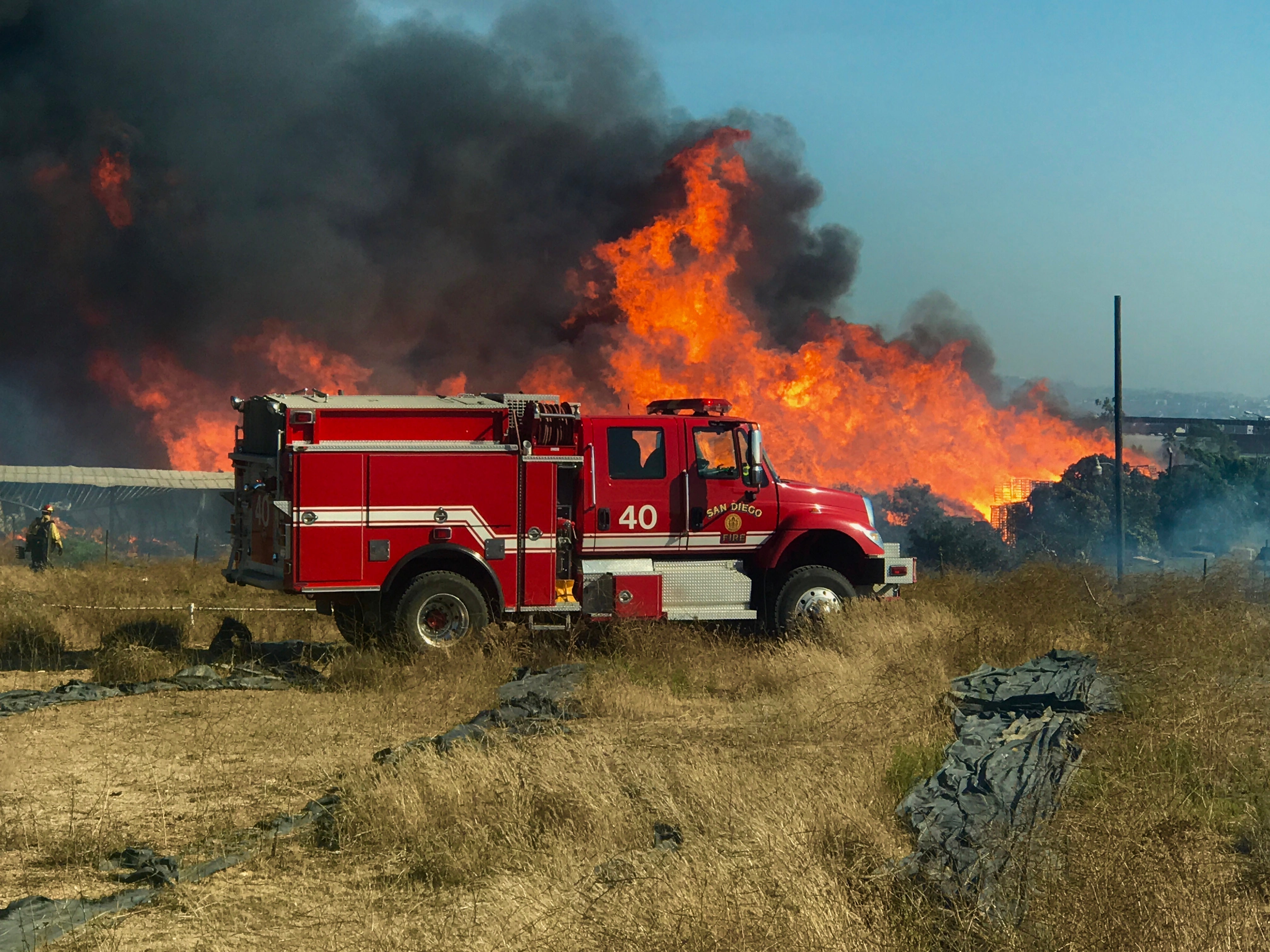
The City of San Diego is developing Climate Resilient SD, a comprehensive climate adaptation and resiliency plan, to ensure San Diego’s residents will continue to thrive in a changing climate. The plan will focus on the four primary climate change-related hazards that are projected to impact the City and intensify over time: sea level rise, extreme rainfall and drought, extreme heat and wildfires.
Climate Resilient SD will include a suite of climate adaptation strategies, focused on minimizing risk and increasing the resilience of San Diego’s people, assets, economy and natural resources.
Examples of different strategies that can address each climate hazard are shown below. Each strategy has varying costs, effectiveness levels, and pros and cons. We invite you to review the information and answer the questions that follow to help us understand which strategies you most support on our path to planning a resilient and thriving San Diego.
Sea Level Rise Adaptation Strategies
Climate change is accelerating sea level rise. By 2100, sea levels could rise by 3.6 to 10.2 feet. This will mean more flooding along the coast and faster rates of coastal erosion.

Potential Strategies

Regulation Options: Updating development regulations, zoning, permitting processes and standards to reduce exposure of development to climate changes hazards and improve ability to respond to climate change hazards.

Beach Nourishment: Sand is purchased and added to City beaches. New sand must be purchased on a regular basis to maintain the current width of the beach and to protect against erosion.

Nature-Based Solutions: Nature-based solutions use natural shoreline protection methods to protect coastal areas from sea level rise, coastal flooding and erosion. Examples include living shorelines, habitat restoration, native plantings and dune restoration, which provide many additional benefits such as providing habitat or carbon sequestration.

Sea Wall: Sea walls are hard, vertical structures, typically made of concrete, that are designed to protect against sea level rise. Sea walls can result in long-term beach erosion.

Land Use Change: Land use change could include the shift to less intensive land uses in areas vulnerable to sea level rise and flooding, such as converting City-owned properties into green space.
| Strategy | Cost | Effectiveness | Pros | Cons |
|---|---|---|---|---|
| Regulation Options |
Low for City to implement |
Can be tailored to be long-term and site-specific |
Protect and prepare new development; minimize future damage |
Potential short-term increased cost to development |
| Beach Nourishment |
Medium (continual additional cost for future nourishments) |
Effective short term |
Maintains beach access |
New sand needed every few years Big storms can wash away new sand |
| Nature Based Solutions |
Low and eligible for grant funding |
Helps mitigate flooding and reduce wave energy |
Offset carbon emissions Improve water quality Protect habitat |
Less land available to develop |
| Sea Wall |
High |
Effective long-term solution for height the sea wall is designed |
Protects property behind sea wall |
Expensive Erodes beach Does not reduce wave energy |
| Land Use Change |
Low to high cost |
Regulations can be tailored to be long-term and site-specific |
Protect habitat Maintain beaches Additional green space for recreation |
Land acquisition can be expensive if easements not obtained |
Extreme Rainfall and Drought Strategies
More extreme variation in the amount of rainfall is expected, resulting in more intense changes between periods of droughts and extreme flooding.


Reactive Maintenance: When an extreme weather event is expected, City crews clean storm drains and culverts, distribute sand bags, close roadways, increase maintenance staff and signage as needed.

Raise Roadways: The road surface level is raised to a higher elevation in areas that routinely flood during extreme weather events to maintain access to the road.

Green Infrastructure: Green infrastructure reduces flooding and runoff by capturing and filtering rain. Examples are street trees, curb cuts, bioswales and permeable surfaces.

Infrastructure Relocation: City assets are moved to alternate areas that are less exposed to climate hazards.

Community Engagement: Community engagement includes informational outreach on drought tolerant landscaping, incentives and guidance on green infrastructure or rain water capture, and flood response.
| Strategy | Cost | Effectiveness | Pros | Cons |
|---|---|---|---|---|
| Reactive Maintenance | Low cost |
Effective short-term for low levels of flooding |
Protects public health and safety Lower short-term cost Flexible Implementation |
Short-term only Continual operational impact |
| Raise Roadways |
High cost |
Maintains access and reduces flooding up to designed height of road |
Protects public health and safety |
Expensive Potential impacts to water runoff patterns |
| Green Infrastructure | Medium |
Reduces flooding at site and runoff to water bodies |
Community greening Improve water quality Capture and reuse of water Heat mitigation |
Not as effective for extreme flood scenarios |
| Infrastructure Relocation | Costs vary: can include moving asset, cost of new land or new construction | Relocation moves asset out of harm’s way |
Critical city services maintained Public health and safety Potential for additional green spaces/habitat restoration |
Expensive |
| Community Engagement | Low | Helps reduce peak flows and/or increase participation in water conservation actions |
Improve water quality Water conservation Community action |
|
Extreme Heat Strategies
Climate change projections for San Diego mean more frequent heat waves, warmer nights and the hottest days getting hotter. Extreme heat poses a health risk to San Diegans.

Potential Strategies

Cool Zones: Cool zones are community buildings that provide an air-conditioned space that the public can access during extreme heat events.

Shade structure: Shade structures include the installation of shade sails, canopies or other features that provide additional shade cover to public spaces and help cool the surrounding area.

Tree Canopy Cover: Tree canopy cover is the coverage of trees’ leaves and branches that provides shade and cooling to the surrounding area, which also helps clean the air and absorb rainwater runoff.

Green Roof: Green roofs convert existing rooftops into roofs covered with live plants. Green roofs can absorb sunlight and heat and reduce ambient temperatures by several degrees, while also providing other aesthetic and environmental benefits.

Cool Roofs: Cool roofs transform existing rooftops to roofs made of light-colored materials that reflect sunlight and heat back into the atmosphere. Cool roofs can keep ambient temperatures much cooler than traditional roofs.
| Strategy | Cost | Effectiveness | Pros | Cons |
|---|---|---|---|---|
| Cool Zones |
Low cost Can utilize existing buildings as designated cool zones. |
Provides relief from extreme heat events |
Address public health need |
Need to ensure residents are able to access cool zones High energy use |
| Shade Structure |
Low: as addition to existing play structure, park, or public space |
Medium level of cooling effect beneath structure |
Expand areas for outdoor activities on hot days |
|
| Tree Canopy Cover |
Low Economic benefit (trees increase in value over time) |
Increase in tree canopy has strong cooling effect |
Offset carbon emissions Energy savings Improve water quality Improve air quality |
Requires regular short-term maintenance |
| Green Roof |
Medium upfront cost Provide cost savings over time |
Strong cooling effect |
Energy savings Improve water quality Improve air quality |
|
| Cool Roof |
Low Cost comparable to conventional roof |
Can reduce peak electricity demand |
Energy savings |
|
Wildfire Adaptation Strategies
Climate change will result in high temperatures, dry conditions and flammable vegetation, which will increase the risk of wildfire. Wildfires pose a risk to public health and safety.

Potential Strategies

Public Outreach Campaigns: Public outreach campaigns provide information to communities on wildfire prevention and response. Outreach can help reduce the ignition of wildfires and prepare communities to evacuate quickly if needed.

Land Use Planning: Smart land use planning can help reduce the risk of wildfires and increase community resilience. Land use planning can include: landscaping regulations, building codes for fire-safe structures, development restrictions in high wildfire risk areas or design standards for better safety, such as secondary access.

Hardening of Buildings/Assets: Buildings are upgraded or designed with fire-resistant materials or include fire-resistant barriers around them to make it more difficult for fires to spread and to protect the building.

Post-Fire Treatments: Post-fire treatments can include seeding or mulching. These treatments can reduce runoff and erosion and improve ecosystem health.

Vegetation Management: Vegetation management reduces the amount of vegetation growing in high wildfire risk areas through actions like invasive brush removal, tree maintenance and removal projects, and controlled burns. When repeated on a regular basis, such maintenance can make fires easier to manage or suppress.
| Strategy | Cost | Effectiveness | Pros | Cons |
|---|---|---|---|---|
| Public Outreach Campaigns |
Low |
Outreach to homeowners reduces unintentional ignitions |
Public health and safety Avoided costs and losses |
|
| Land Use Planning |
Low |
Helps reduce intensity and extent of fire Reduces exposure |
Public health and safety Avoided costs and losses |
|
| Hardening of Buildings/Assets |
Low (when occurring with building construction) |
Helps prevent spread of fires and protects buildings |
Public health and safety Avoided costs and losses |
Expensive if completed for retrofit of existing building |
| Post-Fire Treatments |
Medium |
Reduce post-fire runoff and erosion |
Public health and safety Avoided costs and losses |
Not fire preventive, only recovery |
| Vegetation Management |
Low cost for mechanical or by hand removal Prescribed burns provide returns |
Makes fires easier to manage or suppress Requires continuous action |
Public health and safety Avoided costs and losses Protect environment |
|